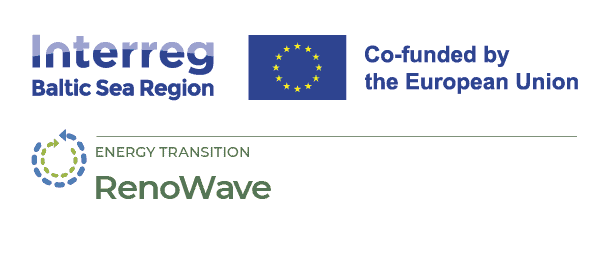
A multi apartment building that made the energy journey from 222 kWh/m2 to 46 kWh/m2
13 September 2023
GENERAL INFORMATION:
Location: Falun, Dalarna, Sweden
Building type: 86 apartments, tenant owned
Year of building: 1969
Phone: +46768035002
E-Mail: info.promenaden@comhem.se
Web: www.hsb.se/malardalarna/brf/promenaden/om-foreningen/
The energy efficiency measures started in 2003 after a steady period of increased cost for energy. Today the pay less for energy than in 1990s, even if prices for energy has increased a lot.
Energy declaration describes the energy use of buildings in kWh per m2 and year including electricity. “Promenaden” is now using 45 kWh per m2 and year on all buildings compared with 222 kWh per m2 and year when the work on energy efficiency started.
Technology solutions
Ventilation air leaving the building has a temperature of 22 degrees. The air is transported through a heat exchanger at the attic. Here the energy can be reused and transported to two heat pumps in the maintaining central in the basement. The lower heat is used for tap water. 229 m2 of solar energy panels is placed on one of the buildings facing south producing hot water that is stored in tanks.
The advanced monitoring and steering system is an important part, placed in the old boiling room in the basement. It has 5 large accumulating tanks. Sun heated water have different temperature depending on solar radiation. Based on that water is directed to the right place in the tanks. The monitoring system collect data from a large number of sensors for temperature and flow. In every moment heat pumps and solar energy heat is combined for optimal energy efficiency. Heat pumps produces a constant high flow of energy during the year, but the solar energy is enough for hot tap water during May to August.
In 2016 an investment in 400 m2 of PV panels reduced the need of purchasing energy even more. The panels produce enough energy to run the heat exchangers and for lightning in common areas.
Energy use at starting point: 222 kWh per m2 per year
Energy use now: 46 kWh per m2 per year
Today, 90 % of the energy used comes from own resources:
– electricity from solar
– heat from solar
– heat from ventilation heat exchanger
– heat from waste water heat exchanger.
When this is not enough, district heating from biomass are being used.
TECHNICAL DATA AND ENERGY SAVINGS
2002: Starting point
The buildings had not very good valves and the temperature in the apartments varied from 19 to 26 degrees. Heat exchanger was in bad condition and inefficient.
Use of district heating: 187 kWh per m2
2003: Energy plan for investments and starting of investments.
New valves and heat exchanger. District heating can be used more efficient.
Use of district heating: 149 kWh per m2
2004: Central monitoring and control system
Make it possible to adjust temperature in each apartment.
Use of district heating: 152 kWh per m2
2005: New water pipes
Less leaks of both hot and cold water. Less district heating.
Use of district heating: 124 kWh per m2
2008: Individual measure and charging of electrical use in apartments
Use of district heating: 117 kWh per m2
2009: New windows
Use of district heating: 119 kWh per m2
2010: Solar energy and heat pumps
Use of district heating: 89 kWh per m2
2013: Car heater and isolation of attics
Individual measure and charging of electrical use for car heating
Extra insulation of attics.
Use of district heating: 52 kWh per m2
2016: PV panels, 400 m2.
2018:
Energy use: 66 kWh per m2
2020: Heat exchanger for waste water
Energy use: 48 kWh per m2
FINANCE
The investments have been done with own money and loan from the bank, no grants has been granted. Yearly economic savings from energy savings has made investments profitable and limited the need for increased rents. There has been very little objections from the home owners in the buildings since the board has been able to show that the energy measures are profitable and increase the value of the property. The same energy expert, Mats Norrfors from ÅF, has been involved in the project from start, contributing to building trust over time.
EXPERIENCES FOR RENOWAVE
RenoWave project organized a study visit for other HOMABs to learn from “Promenaden”. Participants where very interested to learn from the experience, but find one obstacle to be the lack of knowledge about what measures to start with and how to get the measures done.
The measures that has been made in “Promenaden” can technically easy be replicate, because it is standard system with no complications. There is a lot of things that this organization has done, that can be replicated to others. They have quite a lot of visitors and documentations for others to take part of. But, there is large challenge to find a dedicated energy expert that can give the right support. One main advice from the chairman of the board in “Promenaden”, Jan Berg, is to start with a detailed energy audit and to make a longterm good plan in what order to do measures.
MORE INFORMATION (IN SWEDISH)
https://issuu.com/petwet66/docs/smarta_promenaden







